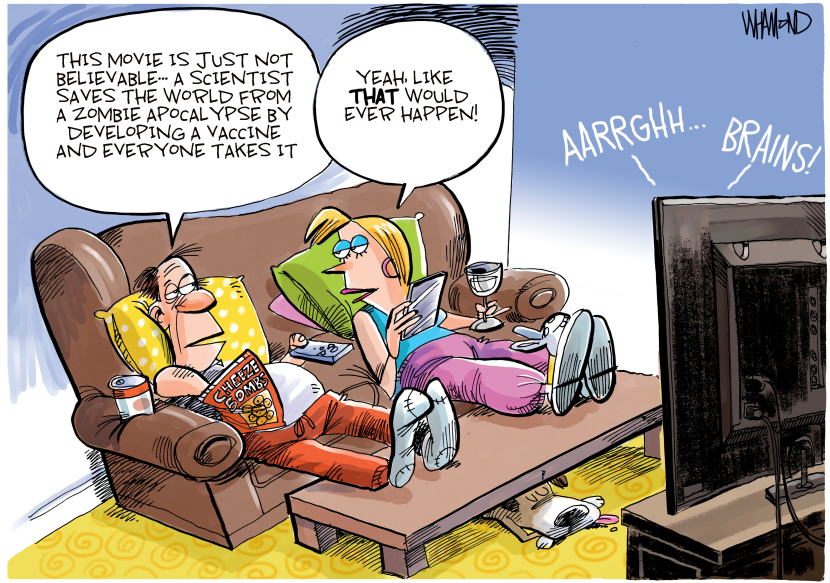Give me a news break

It wasn’t exactly breaking news back in June, but it did stir interest among journalists when CNN’s new boss, Chris Licht, conceded, “Something I have heard from both people inside and outside the organization is complaints we overuse the ‘Breaking News’ banner.” The term, he told his staff, “has become such a fixture on every channel and network that its impact has become lost on the audience.”
Three months later CNN appears to have made modest progress in cutting back, but its three main broadcast competitors have gone dramatically in the other direction. Picking a recent Tuesday evening at random, I found that ABC’s “World News Tonight” had the phrase on-screen for more than five minutes in its scheduled 21-minute newscast; “The CBS Evening News” used it for over six minutes, and NBC’s “Nightly News” logged a ridiculous 10 minutes and 45 seconds.
Some would argue that all news is by definition breaking, otherwise it wouldn’t qualify as news.
A fellow named Stu Paterson tweeted the other day: “The term should only be used on a story such as ‘Putin shot in head.’” While pondering that I received a flash from the showbiz paper Variety—“Breaking News: Catherine Deneuve Is Not Ready to Retire and Has No Regrets.”
NBC’s efforts have become so extreme—and undisciplined—that on the night cited above, it used the “Breaking News” banner in an attempt to cover a portion of video with the words “CNN Exclusive.”
The Associated Press gets credit for recognizing way back in 1906 that not all news is created equal. It coined the term “Flash” to signal clients that something really important was happening. In years to follow, news services used words like “Urgent” and “Bulletin” to flag the biggest stories. I used to get chills in the ABC newsroom on rare occasions when Reuters sent the designation, “Snap.”
Cable-TV and the internet share blame for crying “Breaking”—or in Fox’s case, “Alert”—whenever news seems remotely new or mildly important. With their 24-hour cycles it became necessary to notify viewers that news was, well, happening. It’s an odd and unfortunate twist that the legacy broadcast networks feel the need to compete by suggesting that almost everything they report each evening, no matter how stale, is “Breaking News.”
ABC, meanwhile, has decided that even better balderdash for conveying urgency is the word “tonight.” In the broadcast cited above, David Muir and colleagues invoked the term “tonight” an incredible 64 times — an average of once every 19 seconds.
Of course, not all news happens at night and, despite what garish graphics say, most news isn’t breaking. Coverage, however, does seem to be broken.
–
Copyright 2022 Peter Funt distributed by Cagle Cartoons newspaper syndicate.
Peter Funt’s new memoir, “Self-Amused,” is now available at CandidCamera.com.









